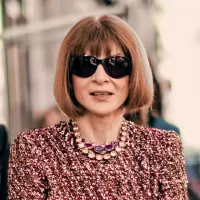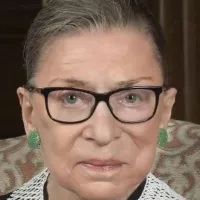The Metropolitan Museum of Art, or the Met, is a comprehensive art museum in New York City. It is the fourth largest museum globally by floor area and the largest art museum in the Americas. In 2023, it welcomed 5.36 million visitors, making it the most visited museum in the United States and the fifth most visited art museum worldwide.
April 1900: Auction of Benin artifact
In April 1900, a famous Benin artifact was auctioned for 37 guineas by Augustus Pitt Rivers. This artifact later became part of the Metropolitan Museum of Art's collection, illustrating the historical journey of art pieces before their acquisition by the museum.
1904: Foundation of the Arms and Armor Collection
In 1904, the Metropolitan Museum of Art laid the foundation for its renowned Department of Arms and Armor with the purchase of Maurice de Talleyrand-Périgord, duc de Dino's collection. This acquisition marked the beginning of what would become one of the museum's most esteemed collections.
1904: End of Cesnola's Directorship
Luigi Palma di Cesnola's term as the Met's first director ended in 1904.
1904: Sale of Edward Steichen's "The Pond-Moonlight"
The Met sold Edward Steichen's 1904 photograph "The Pond-Moonlight" for a record $2.9 million, considering it a duplicate.
1906: Start of Egyptian excavations by the Met
In 1906, the Metropolitan Museum of Art began its archaeological excavations in Egypt. These excavations contributed significantly to the museum's Egyptian collection, which now includes over 26,000 pieces.
1907: Death of Henry Osborne Havemeyer
Henry Osborne Havemeyer, an important collector whose collection would later contribute greatly to the Met's holdings, passed away in 1907.
1907: First Renoir at the Met
In 1907, the first work by Renoir entered the Metropolitan Museum of Art, marking an early step in building the museum's renowned Impressionist and Post-Impressionist art collection.
1908: World's First Museum Shop
In 1908, the Metropolitan Museum of Art is credited with establishing the world's first museum shop.
1910: Completion of Fifth Avenue Facade Wings
McKim, Mead & White completed the wings on the Fifth Avenue facade of the Met in 1910.
1911: Lehman Collection Begins
Robert Lehman's father started the Lehman art collection in 1911.
1913: Benjamin Altman Bequest
In 1913, the Benjamin Altman bequest significantly enhanced the Metropolitan Museum of Art's collection of paintings, solidifying its position in the art world.
1913: Henry Riggs Collection Bequest
In 1913, the Metropolitan Museum of Art significantly expanded its arms and armor collection with the acquisition of the Henry Riggs collection, comprising 2,000 pieces. This collection was one of the finest ever assembled by an individual.
1916: Hiring of William M. Ivins Jr.
In 1916, William M. Ivins Jr. was hired as the Metropolitan Museum of Art's first curator of prints, establishing a mission to collect images showcasing a wide range of human experiences.
1919: Junius Spencer Morgan II Donation
In 1919, Junius Spencer Morgan II donated a broad range of materials to the Metropolitan Museum of Art's prints department, including works by Albrecht Dürer.
1920: Discovery of Egyptian wooden models
In 1920, a set of 24 wooden models was discovered in a tomb in the Southern Asasif, western Thebes. These models, depicting Egyptian life in the early Middle Kingdom, became a significant part of the Metropolitan Museum of Art's Egyptian collection.
1925: Birth of Leonid Tarassuk
Leonid Tarassuk, a significant figure in the organization of the Arms and Armor gallery at the Metropolitan Museum of Art, was born in 1925. His contributions to the museum's collection are well-regarded.
1925: Acquisition of George Grey Barnard's Collection
Rockefeller acquired George Grey Barnard's medieval art collection in 1925, which became the basis for The Cloisters.
1925: Completion of the Henry Riggs Collection Donation
The completion of the Henry Riggs collection donation in 1925 further enriched the Metropolitan Museum of Art's arms and armor collection, cementing its status as one of the finest in the world.
1927: Birth of Eugene V. Thaw
Eugene V. Thaw, a significant benefactor to the Met's plein air collection, was born in 1927.
1929: Havemeyer Collection Bequest
After Louisine Havemeyer's death in 1929, the most significant portion of the Louisine and Henry Osborne Havemeyer collection came to the Met, greatly expanding its Impressionist and Post-Impressionist holdings.
1929: H.O. Havemeyer Collection Donation
The H.O. Havemeyer Collection, containing prints by renowned artists such as Rembrandt and Edgar Degas, was donated to the Metropolitan Museum of Art in 1929, enriching its prints collection.
1932: Hiring of A. Hyatt Mayor
A. Hyatt Mayor was hired in 1932, who would later become the Curator of Prints from 1946 to 1966, contributing significantly to the growth of the department's collection.
1936: George Cameron Stone Bequest
In 1936, George Cameron Stone bequeathed 3,000 pieces of Asian armor to the Metropolitan Museum of Art, marking a significant addition to its arms and armor collection.
1938: The Cloisters Completion
The Cloisters, dedicated to medieval art, was completed in 1938.
1941: End of Egyptian excavations by the Met
In 1941, the Metropolitan Museum of Art concluded its archaeological excavations in Egypt, which had started in 1906. These efforts resulted in a substantial portion of the museum's current Egyptian collection.
1942: Significant Arms and Armor Gift
The year 1942 marked a significant contribution to the Metropolitan Museum of Art's arms and armor collection, setting a benchmark for future donations such as Ronald S. Lauder's in 2020.
1943: Publication of How Prints Look
William M. Ivins Jr. published How Prints Look in 1943, a significant contribution to the understanding of print media and its visual communication.
1946: A. Hyatt Mayor as Curator of Prints
In 1946, A. Hyatt Mayor began his tenure as Curator of Prints at the Metropolitan Museum of Art, during which he expanded the collection significantly.
1946: Merger of the Museum of Costume Art
In 1946, the Museum of Costume Art merged with the Metropolitan Museum of Art to form The Costume Institute, with financial backing from the fashion industry, establishing a new curatorial department.
1949: Jules Bache Gift
The Jules Bache gift in 1949 further expanded the Met's collection with more notable paintings.
1953: Publication of Prints and Visual Communication
In 1953, William M. Ivins Jr. released Prints and Visual Communication, furthering the exploration of prints as a medium of artistic and communicative expression.
1954: Grace Rainey Rogers Concert Hall Opening
The Metropolitan Museum of Art opened the Grace Rainey Rogers concert hall in 1954 and inaugurated a series of concerts.
1955: Deaccessioning of Cypriot and Egyptian Objects
In 1955, the Met sold a large number of Cypriot and Egyptian objects, including 15,000 Egyptian items in the museum's shop and almost 10,000 works from other departments earmarked for auction.
1956: Art Lectures Begin
The "Concerts & Lectures" program expanded in 1956 to include art lectures.
1959: Establishment of The Costume Institute
By 1959, The Costume Institute at the Metropolitan Museum of Art had become a curatorial department, dedicated to preserving and exhibiting a vast collection of costumes and accessories.
1960: Establishment of the Department of Drawings
In 1960, the Metropolitan Museum of Art established a Department of Drawings, with Jacob Bean as curator, significantly expanding its collection of drawings, particularly in French and Italian works.
1965: Temple of Dendur gifted to the United States
In 1965, the Temple of Dendur was gifted to the United States by the Egyptian government as part of the campaign to save Nubian monuments from the Aswan High Dam's rising waters. It was later reassembled at the Metropolitan Museum of Art.
1967: Landmark Designation
The Met's main building was designated a city landmark in 1967.
1968: Temporary exhibition of Rockefeller's collection
In 1968, the Metropolitan Museum of Art agreed to host a temporary exhibition of Nelson A. Rockefeller's art collection, which included works from Africa, Oceania, and the Americas. This agreement paved the way for the eventual inclusion of these works in the museum's permanent collection.
1968: William Kolodney's Directorship Ends
William Kolodney concluded his role as director of the "Concerts & Lectures" program in 1968.
October 1969: Met Centennial Begins
The Metropolitan Museum of Art's centennial celebration commenced in October 1969, featuring various events and programs.
1969: Robert Lehman Wing
Following Robert Lehman's death in 1969, his foundation donated 2,600 works of art, forming the "Robert Lehman Wing."
1969: Robert Lehman's Death and Donation
Following Robert Lehman's death in 1969, the Robert Lehman Foundation gifted nearly 3,000 artworks to the Met.
1969: Hilde Limondjian Becomes Director
Hilde Limondjian took over as director of the "Concerts & Lectures" program in 1969.
1969: Rockefeller's donation to the Met
In 1969, American businessman and philanthropist Nelson A. Rockefeller donated his extensive collection of over 3,000 pieces from Africa, Oceania, and the Americas to the Metropolitan Museum of Art. This donation marked a significant expansion of the museum's collection in these areas.
1969: Harlem on My Mind Exhibition
The "Harlem on My Mind" exhibition in 1969 sparked controversy for not featuring Harlem artists.
1970: Agreement with New York City
A 1970 agreement between the museum and New York City required New York state visitors to pay at least a nominal amount for admission.
1970: Publication of "Merchants and Masterpieces"
Calvin Tomkins published "Merchants and Masterpieces" in 1970, which discussed the Met's deaccessioning practices. A revised edition was published in 1989.
1971: Opening of Print Galleries and Study Room
In 1971, William M. Ivins Jr. opened three galleries and a study room dedicated to prints at the Metropolitan Museum of Art, enhancing public access to this collection.
1971: Met Centennial Concludes
The Met's centennial celebrations concluded in the spring of 1971.
1972: Investigation into Deaccessioning Practices
In 1972, New York State Attorney General Louis J. Lefkowitz launched an investigation into the Met's deaccessioning practices following public outcry and hearings. This led to the museum agreeing to increased transparency regarding art sales.
1972: Acquisition of Benin artifact
In 1972, the Metropolitan Museum of Art acquired a famous Benin artifact, initially auctioned in April 1900. The artifact became a significant part of the museum's African Art collection, reflecting the museum's efforts to diversify its holdings.
1974: Publication of "The Grand Acquisitors"
John L. Hess's book "The Grand Acquisitors" was published in 1974, offering a comprehensive account of the Met's deaccessioning scandal.
1975: Installation of the Parade of Armored Figures
In 1975, the distinctive 'parade' of armored figures on horseback was installed in the first-floor Arms and Armor gallery of the Metropolitan Museum of Art. This installation, organized with the help of Leonid Tarassuk, became one of the museum's most recognizable images.
1975: Robert Lehman Collection
The Robert Lehman Collection, donated to the museum in 1975, enriched the Met's holdings with many important paintings, especially from the early Renaissance.
1977: Interior Landmark Recognition
The Met's interior was recognized as a landmark in 1977.
1978: Temple of Dendur reassembled at the Met
In 1978, the Temple of Dendur was reassembled in a new wing at the Metropolitan Museum of Art, becoming a popular centerpiece of the Egyptian Art department.
1982: Opening of the Michael C. Rockefeller Wing
In 1982, the Metropolitan Museum of Art opened the Michael C. Rockefeller Wing, dedicated to the arts of Africa, Oceania, and the Americas. This wing was named in honor of Nelson Rockefeller's son, Michael, and marked the public debut of the extensive collection donated by Rockefeller.
1986: National Historic Landmark Designation
The Met's main building was designated a National Historic Landmark in 1986.
1987: Do women have to be naked to get into the Met. Museum?
In 1987, the Guerrilla Girls created the poster "Do women have to be naked to get into the Met. Museum?"
1989: Revised Edition of "Merchants and Masterpieces"
A revised edition of Calvin Tomkins' "Merchants and Masterpieces" was published in 1989.
1990: NAGPRA enacted
The Native American Graves Protection and Repatriation Act (NAGPRA) was established in 1990, requiring federally funded institutions to repatriate Native American human remains, funerary objects, and other culturally significant items.
1991: Annenberg Collection Gift
Walter H. and Leonore Annenberg promised their impressive collection of Impressionist and Post-Impressionist paintings to the Met in 1991, further enhancing the museum's holdings in this area.
1992: Jacob Bean's Retirement
Jacob Bean retired in 1992 after serving as curator of the Department of Drawings at the Metropolitan Museum of Art, during which he nearly doubled the museum's collection of drawings.
1992: Founding of Photography Department
The Met's photography department was founded in 1992.
1993: Creation of the Unified Department of Drawings and Prints
In 1993, the Metropolitan Museum of Art unified its works on paper into a single Department of Drawings and Prints, chaired by George Goldner, who worked to address collecting imbalances by adding diverse works.
1993: Charles and Valerie Diker donate Indigenous objects
Starting in 1993, Charles and Valerie Diker donated 139 Indigenous, mostly funerary, objects to the Met, many with significant gaps in their ownership history.
1997: Permanent Photography Gallery
A permanent photography gallery opened at the Met in 1997.
1999: Rock Style Exhibit
In 1999, the Metropolitan Museum of Art's Costume Institute presented the Rock Style exhibit, showcasing the fashion influence of over 40 rock musicians, including Madonna and David Bowie.
2000: Met Museum collection size in 2000
In 2000, the Metropolitan Museum of Art's permanent collection comprised over two million works. The collection was organized into 17 curatorial departments, showcasing the vast array of art held by the museum at that time.
2001: Islamic Art Galleries Renovation Begins
In 2001, the Metropolitan Museum of Art began renovations of its Islamic art galleries, leading to a major expansion and reinstallation of the collection.
2001: Extreme Beauty: The Body Transformed Exhibit
The 2001 exhibit, Extreme Beauty: The Body Transformed, explored changing ideals of physical beauty over time, highlighting the bodily transformations required to meet such standards.
2003: Acquisition of Whitney Collection
In 2003, the Met acquired half of Wheelock "Lock" Whitney III's collection, bolstering their plein air painting collection. The other half was a promised gift.
2005: The Chanel Exhibit
In 2005, the Costume Institute honored the legacy of Coco Chanel with The Chanel Exhibit, celebrating her impact as a leading figure in fashion history.
2006: Repatriation of the Euphronios Krater
In 2006, the Euphronios Krater, a classical Greek vase purchased by the Met, was repatriated to Italy due to evidence that it was looted.
2007: Costume Institute Benefit Gala Ticket Price
In 2007, the Costume Institute's annual Benefit Gala, a highly anticipated event in the fashion world, offered 700 tickets starting at $6,500 each.
2007: Post-1960 Photography Gallery
In 2007, the Met designated a gallery for photographs made after 1960.
2007: Reinstallation of Nineteenth and Early Twentieth Century galleries
In 2007, the Metropolitan Museum of Art reinstalled its Nineteenth and Early Twentieth Century galleries, enhancing the presentation of its European paintings collection on the second floor of the main building.
2007: Greek and Roman Galleries Expansion
The Metropolitan Museum of Art expanded its Greek and Roman galleries in 2007, creating a larger space for its collection.
2008: Superheroes: Fashion and Fantasy Exhibit
The 2008 exhibit, Superheroes: Fashion and Fantasy, at the Metropolitan Museum of Art, presented superheroes as ultimate fashion icons, merging fantasy with high fashion.
2009: Publication of "Rogues' Gallery"
Michael Gross published "Rogues' Gallery" in 2009, further documenting the Met's deaccessioning controversies.
2009: Publication of "The Secret History"
Michael Gross published "The Secret History of the Moguls and the Money That Made the Metropolitan Museum" in 2009, which the museum bookstore refused to sell.
2009: Operating Budget
The museum's operating budget for 2009-2010 was $221 million.
2010: Hilde Limondjian's Directorship Ends
Hilde Limondjian finished her tenure as director of the "Concerts & Lectures" program in 2010.
2010: American Woman: Fashioning a National Identity Exhibit
In 2010, the American Woman: Fashioning a National Identity exhibit highlighted the revolutionary styles of American women from 1890 to 1940, reflecting social and political sentiments of the era.
2011: Daniel Brodsky Elected Chairman
Daniel Brodsky was elected chairman of the Met's board in 2011.
2011: Maxwell K. Hearn becomes chairman of Asian Art
In 2011, Maxwell K. Hearn became the chairman of the Asian Art department at the Metropolitan Museum of Art, overseeing a comprehensive collection of over 35,000 pieces representing major Asian civilizations and a span of 4,000 years of art.
2011: Theft of Nedjemankh's coffin
In 2011, the golden-sheathed coffin of Nedjemankh was stolen from Egypt. This artifact later became part of an exhibition at the Metropolitan Museum of Art before its return to Egypt in 2018 following an investigation.
2011: Limor Tomer Leads MetLiveArts
Limor Tomer became general manager of MetLiveArts in 2011, shifting the program's focus.
2011: Alexander McQueen: Savage Beauty Exhibit
The 2011 exhibit, Alexander McQueen: Savage Beauty, showcased the innovative designs of the late fashion icon, Alexander McQueen, drawing significant attention to the Metropolitan Museum of Art.
January 16, 2012: New American Wing Galleries Open
On January 16, 2012, the Metropolitan Museum of Art opened its renovated American Wing galleries, showcasing American art from the 18th through the early 20th centuries in a significantly expanded space.
June 2012: Art Acquisition Spending
The Met spent $39 million on acquiring art for the fiscal year ending in June 2012.
2012: European paintings collection size in 2012
In 2012, the Metropolitan Museum of Art's collection of European paintings included more than 2,500 works spanning from the thirteenth to the early twentieth century.
2012: Formalization of Chairman's Authority
The Met's by-laws were amended in 2012 to formally establish the chairman's authority over the president and director positions.
April 2013: Leonard Lauder Cubist Collection
In April 2013, Leonard Lauder donated a billion-dollar collection of Cubist art.
2013: Diana Craig Patch becomes curator of Egyptian Art
In 2013, Diana Craig Patch became the curator of the Egyptian Art department at the Metropolitan Museum of Art, overseeing the vast collection that includes the Temple of Dendur and other significant artifacts.
2013: Formation of Digital Media Department
The Met's Digital Media Department was formed in 2013.
January 14, 2014: Naming of the Anna Wintour Costume Center
On January 14, 2014, the Metropolitan Museum of Art named the Costume Institute complex after Anna Wintour, in recognition of her contributions to fashion and the arts.
September 2014: Sylvia Yount becomes Curator of American Wing
Sylvia Yount became the curator in charge of the American Wing at the Metropolitan Museum of Art in September 2014.
2014: Display of Lauder Collection
The Leonard Lauder Cubist collection went on display in 2014.
2015: Financial Setbacks
Between 2015 and 2017, The Met experienced financial setbacks attributed to slowing revenue, rising costs, and undertaking too many projects simultaneously.
2015: Credit Rating
In 2015, Moody's affirmed the Met's Aaa credit rating, the highest possible rating.
2015: Nadine Orenstein Appointed as Curator in Charge
In 2015, Nadine Orenstein became the Drue Heinz Curator in Charge of the Department of Drawings and Prints at the Metropolitan Museum of Art, continuing to enhance the department's collection.
September 2016: Financial Setbacks and Staffing Cuts
In September 2016, the museum experienced financial setbacks and implemented staffing cuts to balance its budget by fiscal year 2018.
2016: Organization of Board Activities
As of 2016, the activities of the board of trustees were structured around individual trustees and their respective committees, including Nominating, Executive, Acquisitions, Finance, Investment, Legal, Education, Audit, Employee Benefits, External Affairs, Merchandising, Membership, Building, Technology, and The Fund for the Met.
2016: Criticism of Potential Admission Fee Increase
During the 2016-2017 fiscal year, articles by Robin Pogrebin in The New York Times criticized speculative suggestions among Met administrators about increasing revenue by ending the free admission policy.
2016: Revenue Sources
In 2016, admissions accounted for only 13 percent of the museum's revenue.
2016: Record Attendance
In 2016, the museum achieved a record attendance of 6.7 million visitors.
2016: Departure of Sree Sreenivasan
Sree Sreenivasan, the first Chief Digital Officer, left the Met in 2016.
April 2017: Financial Challenges and Expansion Postponement
In April 2017, the Met faced nearly $40 million in annual debt and a $250 million bond, leading to the postponement of a planned $600 million expansion and discussions about human resources management.
May 2017: Proposal for Out-of-State Admission Fees
In May 2017, the Met formally proposed charging admission fees to out-of-state visitors, potentially requiring changes to an 1893 New York State Act.
September 2017: Public Concern Over Proposed Admission Increases
In September 2017, Roberta Smith, writing for The New York Times, highlighted growing public concern over proposed increases in admission costs at the Metropolitan Museum of Art, with fears that these increases would negatively impact attendance.
2017: Museum Visitors
In fiscal year 2017, the museum had 7 million visitors, with 37% international and 30% from New York's five boroughs.
2017: Open Access Initiative
The Met launched its Open Access initiative in 2017, releasing over 375,000 images to the public domain.
2017: Thomas P. Campbell's Resignation
Thomas P. Campbell resigned as CEO and director of the Met in 2017.
January 2018: New Admission Policy Announced
In January 2018, the Met announced a new admission policy, starting in March 2018, charging $25 for out-of-state visitors due to financial difficulties and potential funding cuts from New York City.
January 2018: Admission Fee Announcement
In January 2018, the Met announced it would start charging an admission fee for out-of-state and international visitors.
January 2018: Museum President Announces End of Free Admission Policy
In January 2018, the Met's president, Daniel Weiss, announced the end of the museum's century-old free admission policy.
January 2018: Reconsideration of Expansion
In January 2018, the museum president considered a downsized version of the expansion project, potentially reducing the cost to $450 million.
March 2018: Museum Admission Price
As of March 2018, the museum's admission price was set at $25 for out-of-state and foreign visitors, while New York state residents could pay what they wished.
March 2018: New Admission Fees Implemented
Starting in March 2018, the Met implemented new admission fees for most visitors who weren't residents of New York state or students from New York, New Jersey, or Connecticut.
March 2018: Implementation of New Admission Policy
The new admission policy, charging out-of-state visitors, went into effect in March 2018.
April 2018: Max Hollein Appointed Director
Max Hollein was appointed director of the Met in April 2018.
July 2018: Art of Native America Opens
In July 2018, the Metropolitan Museum of Art opened its "Art of Native America" exhibit within the American Wing, marking the first time Indigenous American art was displayed in this space. This event drew scrutiny due to questions about the provenance of the exhibited items.
September 2018: Met Breuer Vacancy Announcement
The Met announced its intention to vacate the Met Breuer building in September 2018, three years earlier than planned.
2018: Death of Eugene V. Thaw
Eugene V. Thaw passed away in 2018. He and his wife, Clare, donated their extensive collection of plein air paintings to the Met and the Morgan Library.
2018: Return of the coffin of Nedjemankh
In 2018, the Metropolitan Museum of Art returned the golden-sheathed coffin of Nedjemankh to Egypt after it was discovered to have been stolen in 2011. The artifact had been a part of an exhibition built around it before the investigation revealed its illicit origins.
2018: Publication of "Deaccessioning and its Discontents"
Martin Gammon's book "Deaccessioning and its Discontents: A Critical History" was published in 2018, exploring the controversies surrounding museum deaccessioning practices.
2018: Acquisition of Gris' The musician's table
The Met acquired Juan Gris' The musician's table in 2018.
2018: Budget Balancing Goal
The Met aimed to balance its budget by fiscal year 2018.
2019: Black Women's Wisdom
Ben Blount created "Black Women's Wisdom" in 2019.
2019: Pre-Pandemic Visitor Numbers
In 2019, before the pandemic, the Met had 6,479,548 visitors.
2019: Review of Donation Policy
In 2019, museum president Daniel Weiss announced a review of the museum's donation policy due to concerns about the Sackler family's donations.
2019: Leslie and Johanna Garfield Collection Gift
The Leslie and Johanna Garfield Collection of British Modernism was gifted to the Metropolitan Museum of Art in 2019, enriching its offerings in modern works on paper.
2019: Wrightsman Bequest
The final installment of the Charles and Jayne Wrightsman donation came in 2019 with Mrs. Wrightsman's bequest, adding 94 works of exceptional quality to the Department of European Paintings.
January 2020: Met Film Archive on YouTube
Starting January 2020, the Met began uploading films from its archive to YouTube.
March 2020: Temporary Closure Due to COVID-19
The Met temporarily closed in March 2020 due to the COVID-19 pandemic.
September 2020: Appointment of Native American Art Curator
Patricia Marroquin Norby was appointed as the Met's first Associate Curator of Native American Art in September 2020.
2020: Ronald S. Lauder's Promised Gift
In 2020, Ronald S. Lauder promised a gift of 91 objects from his collection to the Metropolitan Museum of Art. This donation was described as the most significant European arms and armor gift to the museum since 1942, celebrated for its rarity and quality.
2020: COVID-19 Pandemic Impacts Met Operations
In 2020, the COVID-19 pandemic significantly impacted the Met's operations, resulting in the museum's first long-term closure on March 13 and a significant drop in visitor numbers.
2020: Art Acquisition Spending
In 2020, the Met spent $29,824,000 on art acquisitions, with $6,747,000 coming from insurance and art sales.
2020: Planned renovation of the Michael C. Rockefeller Wing
Initially planned to begin in 2020, the Metropolitan Museum of Art's renovation of the Michael C. Rockefeller Wing was delayed, illustrating the challenges faced in executing large-scale museum projects.
2020: Super Diva!
Julie Torres created "Super Diva!", a posthumous image of Ruth Bader Ginsburg, in 2020.
2020: Met Breuer Closes
The Met Breuer closed in 2020.
2020: Potential Expansion Reconsideration
The museum considered revisiting the downsized expansion plan as early as 2020.
May 2021: Plaque Installation
A plaque recognizing indigenous communities was installed on the Met's facade in May 2021.
December 2021: Update on European paintings collection
As of December 2021, the Metropolitan Museum of Art's European paintings collection comprised 2,625 works, housed in various galleries including newly installed Old Masters galleries.
December 2021: Renovation of the Michael C. Rockefeller Wing begins
In December 2021, the Metropolitan Museum of Art commenced a $70 million renovation of the Michael C. Rockefeller Wing, focusing on African, ancient American, and Oceanic art galleries. The renovation, initially planned for 2020, was aimed at modernizing the 40,000 square-foot space.
December 2021: Removal of Sackler Name
In December 2021, the museum announced that it would remove the Sackler name from its locations, following pressure from activist groups concerning the family's donations.
2021: Board Leadership Changes
In 2021, Candace Beinecke and Hamilton E. James were elected as the new co-chairs of the Metropolitan Museum of Art's board.
2021: Deaccessioning Controversy Amidst COVID-19
In 2021, the Met faced criticism for using funds from deaccessioned works for collection care, including salaries, during the COVID-19 pandemic, despite a temporary relaxation of guidelines by the AAMD.
2021: Partial Reopening and Visitor Numbers
In 2021, the Met gradually partially reopened with reduced hours, mask mandates, and social distancing measures. Despite this, the museum attracted 1,958,000 visitors, ranking fourth globally.
2021: Art Acquisition Spending
In 2021, the Met spent $36,402,000 on art acquisitions, with $4,007,000 sourced from insurance and art sales.
2021: Museum Endowment
In 2021, the museum's endowment, managed by investment officer Lauren Meserve, reached US$3.3 billion, which significantly funded the museum's operations.
2021: Revolution, Resistance, and Activism
In 2021-22, the Met exhibited contemporary political works on paper in "Revolution, Resistance, and Activism."
March 2022: Hiring of Frida Escobedo
Frida Escobedo was hired to renovate the Tang wing in March 2022.
May 2022: Collaboration with World Monuments Fund
In May 2022, the Met and the World Monuments Fund announced a digital collaboration for the 2024 reopening of African, ancient American, and Oceanic art galleries.
August 2022: Cambodian government pressures Met to return Khmer artifacts
In August 2022, the Cambodian government pressured the Met to return Khmer artifacts allegedly looted during and after the civil war.
August 2022: Hollein's CEO Announcement
It was announced in August 2022 that Max Hollein would become CEO of the Met in July 2023.
September 2022: NY law enforcement seizes artifacts from the Met
In September 2022, New York law enforcement seized 27 Roman, Greek, and Egyptian artifacts from the Met, intending to return them to Italy and Egypt due to their link to antiquities traffickers.
September 2022: Gift from Qatar Museums and Gallery Renaming
In September 2022, the Met received a significant gift from Qatar Museums and renamed its Gallery of the Umayyad and Abbasid Periods to the Qatar Gallery in recognition of the donation and a new partnership.
2022: Art Acquisition Spending
In 2022, the Met's spending on art acquisitions reached $74,432,000, with $9,488,000 generated from insurance and art sales.
March 22, 2023: Manhattan prosecutors seize stolen antiquities
On March 22, 2023, Manhattan prosecutors seized 15 allegedly stolen antiquities linked to Subhash Kapoor.
April 2023: ProPublica report exposes Met's Indigenous American collections
In April 2023, ProPublica published a report detailing the Met's Indigenous American collection, exposing the loan vs. ownership loophole used to avoid repatriation and highlighting the questionable provenance of many items, leading to international outcry.
July 2023: Hollein Becomes CEO
Max Hollein assumed the role of CEO of the Met in July 2023.
December 2023: Met returns Khmer sculptures to Cambodia and Thailand
In December 2023, the Met announced the return of 14 Khmer sculptures to Cambodia and 2 to Thailand after determining they were stolen and linked to art dealer Douglas Latchford.
2023: Cost of Entry to the Museum
By 2023, the cost of entry to the Met had risen to approximately $30.
2023: Art Acquisition Spending
In 2023, the Met spent $52,401,000 on acquiring art, with $7,444,000 coming from insurance and the sale of art.
2023: Metropolitan Museum of Art visitor statistics
In 2023, the Metropolitan Museum of Art in New York City became the most-visited museum in the United States, attracting 5.36 million visitors. This made it the fifth-most visited art museum in the world for that year.
2023: Installation of Old Masters galleries
In 2023, the Old Masters galleries at the Metropolitan Museum of Art were newly installed, showcasing part of the museum's extensive European paintings collection.
2024: Tang Wing Fundraising and Gallery Renovations
By 2024, the Met had raised $550 million for renovations of the Tang wing, and hired Moody Nolan to renovate the Ancient Near Eastern and Cypriot galleries.
2024: Protests During Israel-Gaza War
Protests took place at the Met in 2024 during the Israel-Gaza war due to board members' investments and the museum's silence on cultural heritage destruction.
2024: Planned completion of the Michael C. Rockefeller Wing renovation
The renovation of the Michael C. Rockefeller Wing is set for completion in 2024, marking a major update to the Metropolitan Museum of Art's presentation of African, ancient American, and Oceanic art.
Mentioned in this timeline

Anna Wintour is a highly influential British-American media executive renowned...

Ruth Bader Ginsburg was an American lawyer and Supreme Court...
Qatar is a country located on the Qatar Peninsula in...

David Bowie David Robert Jones was a highly influential English...
Africa is the second-largest and second-most populous continent comprising of...
Connecticut is a state in the New England region of...
Trending

Julian Assange an Australian editor publisher and activist founded WikiLeaks in He gained international prominence in following WikiLeaks' publication of...

Lunar New Year marks the start of a new year based on lunar or lunisolar calendars Lunar calendars have a...

9 months ago Camping World Shuts Down Greenville Location Due to Flag Controversy
Vance Joseph is an American football coach and former player currently serving as the defensive coordinator for the Denver Broncos...
1 month ago GameStop's Valuation, Investor Sentiment, Burry's Email, and Strategic Shifts Analyzed.

Charvarius Mooney Ward is a professional American football cornerback currently playing for the San Francisco ers in the NFL Before...
Popular

Stranger Things created by the Duffer Brothers is a popular...

XXXTentacion born Jahseh Dwayne Ricardo Onfroy was a controversial yet...

Kelsey Grammer is an accomplished American actor producer and singer...

Candace Owens is an American conservative political commentator and author...

Melania Trump a Slovenian-American former model has served as First...

Bernie Sanders is a prominent American politician currently serving as...
